IBUYPOWER Paladin XLC Phantom Series System Review
IBUYPOWER Paladin XLC Phantom Series Moving Inside
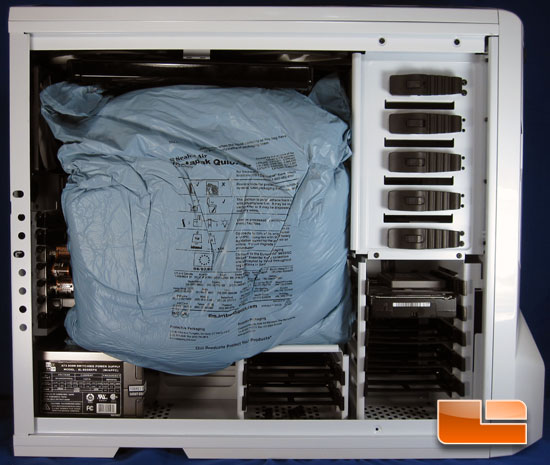
Once we pull the side cover off we can see the internal packaging that will keep the components safe during shipping. It is imperative that this be removed prior to firing up the iBUYPOWER Paladin XLC Phantom.
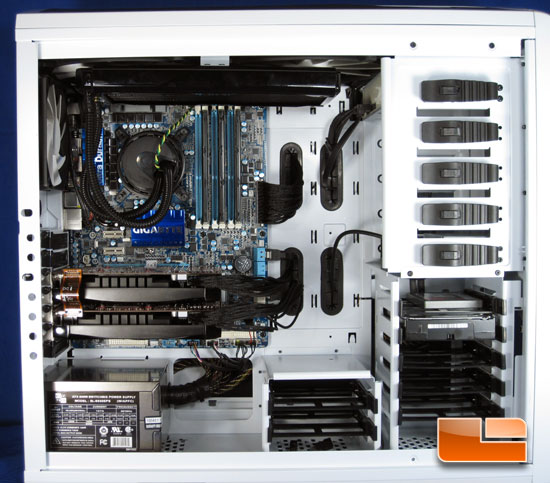
Once the packaging is removed we can see that the cable management in the iBUYPOWER Paladin XLC Phantom is impeccable.
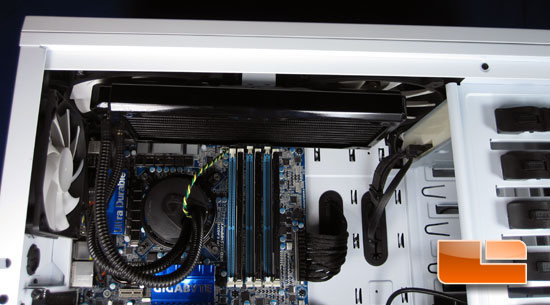
Looking inside the top of the iBUYPOWER Paladin XLC Phantom we can see that the CPU is cooled by a 240mm radiator. The iBUYPOWER Paladin XLC Phantom’s CPU cooling system is an Asetek 570LX 240mm Liquid Cooling system.
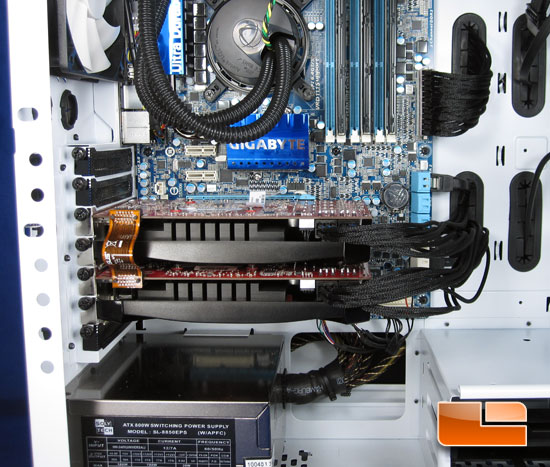
The motherboard used in this particular model is a GIGABYTE X58A-UD3R, which is an upgrade from the base model’s ASUS P6T SE. The graphics cards that you can see here are also upgraded from the base model’s Radeon HD 5830. Here we have a pair of PALIT GeForce GTX 460 1GB cards running is SLI! Powering the iBUYPOWER Paladin XLC Phantom is a Soly-Tech SL-8850EPS 800 Watt power supply.
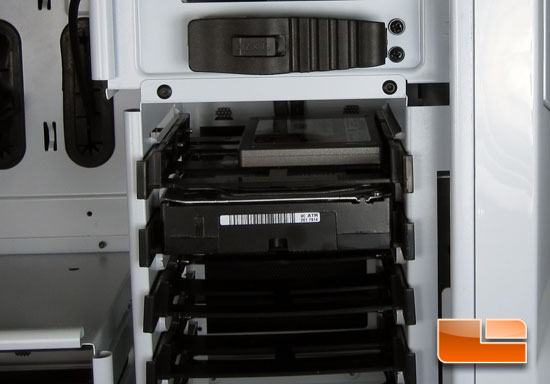
The iBUYPOWER Paladin XLC Phantom that was sent to us includes a 64GB Kingston SSDNow! V2 series MLC SSD for your operating system and a 1TB SATA3 Western Digital Black Edition data drive.
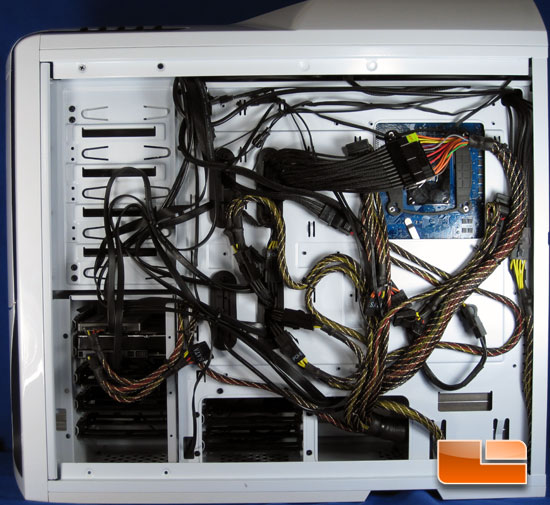
The back of the iBUYPOWER Paladin XLC Phantom is a bit of a rats nest. Fortunately, that is okay since we aren’t worried about airflow back here. Although, I am not real wild about the extension cables used for the motherboard and cpu power cables. I know that sometimes you need additional cable length but I would prefer to use a power supply with the necessary cable length.
Now that we have covered what makes up the iBUYPOWER Paladin XLC we can start the fun and get to some testing. We are going to test the iBUYPOWER Paladin XLC Phantom in four different configurations. First we are going to run two configurations each with the Intel Core I7 930 and the Intel Core I7 970, first we will run the processors at the out of the box speeds of the I7 930 2.8GHz with turbo enabled and the same for the Intel I7 970 at 3.2GHz with turbo enabled as well. Next we will run the iBUYPOWER Paladin XLC Phantom at a 25% overclock on each processor. We will be running the Intel Core I7 930 processor at 3518MHz and the Intel Core I7 970 at 3840MHz. This is considered iBUYPOWER’s level 3 overclocking which will overclock the processor up to 30%. Well, enough talk; let’s get to the testing!

Comments are closed.